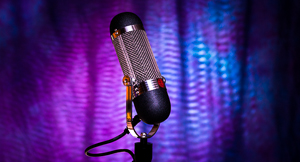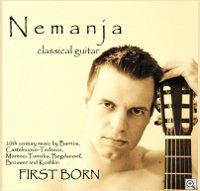Let’s assume that you are a mature musician who is fully in command of your musical skills. You have the ability and depth to express music, and you are ready to make a recording. What is the single most important recording decision you can make? Is it the type of recording equipment, the engineer you choose, the brand name of the microphones, preamplfiers, digital converters, the phase of the moon or something else that will play the largest role in determining how good your recording will sound?
Since we live in a consumer world music stores, on line retailers and the manufacturers of recording equipment will suggest that purchasing the newest computer, recorder, microphone, software, or desktop device will allow you to create an amazing sounding recording in the privacy of your own home without knowing what you are doing. So like sheep we go and buy equipment.
The first ‘recording’ mic I bought I brought home, set it up in my beautiful front room of a 1927 craftsman style home and made an incredible recording of my foot tapping the floor, cars driving by and the refrigerator turning on and off. It was a great experience which I learned a lot from. After I turned off the refrigerator and placed put a rug under my feet I made an even better recording of cars driving by. A slightly less obvious problem was that my voice and guitar didn’t sound right no matter where the microphone was placed or how much post processing I could apply.
Way back in the 70’s when I attended IU School of Music I took a graduate level course on Acoustics that John Nagaoski taught. The subject of the class was Sabines’ formula RT60, which explains how interior architecture affects the way sound sounds in a room. As I started researching what it took to build a great recording studio I found books by F. Alton Everest including the ‘Master Handbook of Acoustics’, and several other relevant titles. It turns out that the basic design tool was Sabine’s RT60 formula, and understanding the relationship of room dimensions, materials, and the use of passive architectural devices to tune a room was what made a great room to record in. Rooms turn out to be just like the body of instruments. Take the strings off of one guitar and put them on another guitar and they will sound different. Take an instrument into two different rooms and it will sound different in each room.
So I think the single most important choice you have to make regarding how good a recording will sound is what room are you recording in. To pick a room start with a few simple questions. Does the room keep outside sounds out? Does the mechanical systems of the building create noise inside? Most importantly does the room alter the way music sounds in it? With these questions in mind you will find that it is hard to retrofit acoustic improvements into inadequate structures, and that the sexy equipment that manufactures advertise to ‘home recording artist’ simply cannot alter the fact that your room does not sound good.
For audio recording purposes residential structures simply fail. They are too light to keep outside sound out, the mechanical systems are too noisy, and the relationship between internal dimensions and the acoustic properties of the materials used guarantee failure. Churches and Concert Halls also generally fail. Building code requires these rooms to be able to get people in and out quickly in case of emergencies. Lots of doors means lots of noise. The heating and cooling systems are designed to recover quickly when the room fills or empties and tend to be noisey. The expense of adding an acoustical consulting firm and the additional materials required to build a great sounding room means there are very few great sounding rooms built. Modern churches in particular could care less about good acoustics since they are going to buy huge sound systems that simply overpower bad acoustics.
If you read this far you ought to come visit Sweet Owen Sound. It is not huge like the big studios that are falling like dinosaurs, but it was carefully designed to reject outside noise, has extremely quiet mechanical systems and has a frequency response that is balanced and neutral. By design the RT60 (reverberation time) is appropriate and optimized for the recording of a string quartet. It is a superb room to record in.





